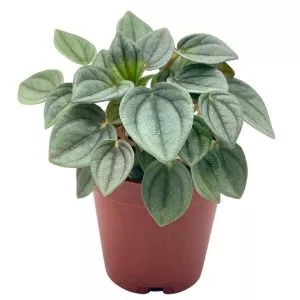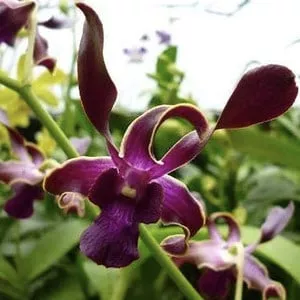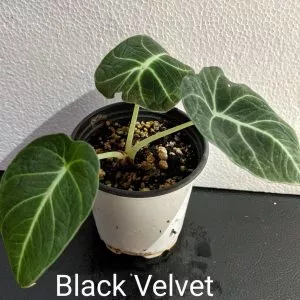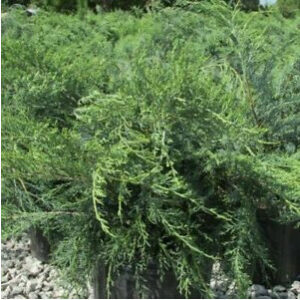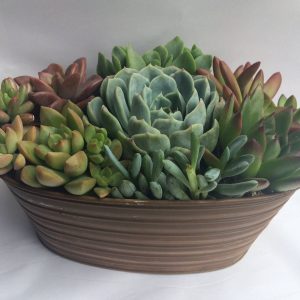No products in the cart.
Table of Contents
Ooh, we love bananas, but yes, this is a big BUT, the plant grows no fruit still it is a remarkable plant. So, to add to the mixture, this new trailing succulent is even more popular than the string of pearls plant.
Yes, the Senecio radicans are a more popular houseplant than the string of pearls, and they are close relatives. So today, we will help you take care of this popular indoor plant.
More About Senecio Radicans String of Bananas
As mentioned, this plant grows no bananas but does have banana-shaped leaves. The tendrils hang and expand long, making it fast-growing than the string of pearls.
The best part is if you have struggled to keep your string of pearls alive, you will have better luck with this plant.
The string of bananas comes from South Africa and is part of the Asteraceae family.
The fascinating thing is the hanging tendrils you can train to grow up a moss pole or trellis or use in a hanging basket.
You can also grow them outdoors, but remember these succulents are not frost-hardy. The string of banana plants has attractive foliage instead of blooms.
One more exciting thing is it is a low-maintenance plant. The plant goes by the String of Fishhooks or the Necklace Plant.
String Of Banana Succulent Care
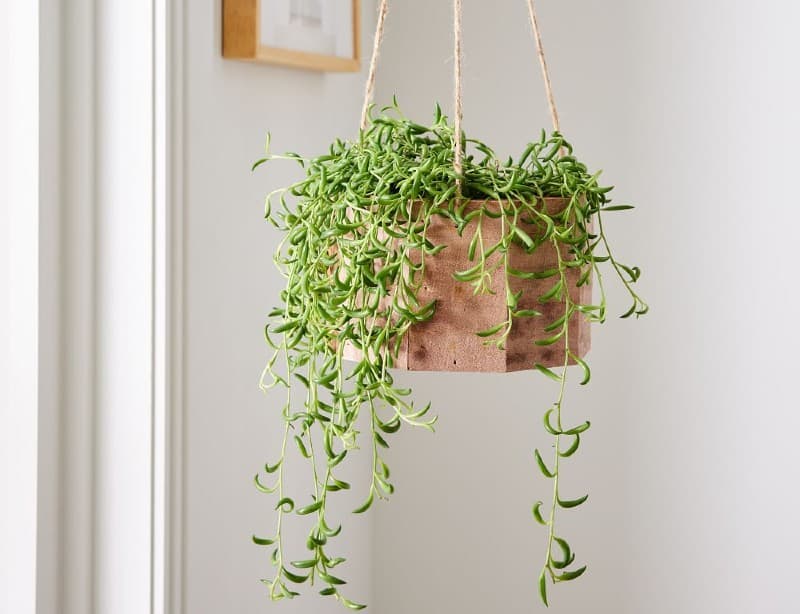
Suppose you grow this plant as a hanging succulent; it exhibits bright green to lime green shade foliage. If you can get it right, it blossoms in white fragrant flowers. You can enjoy this gorgeous plant in your home with the proper care.
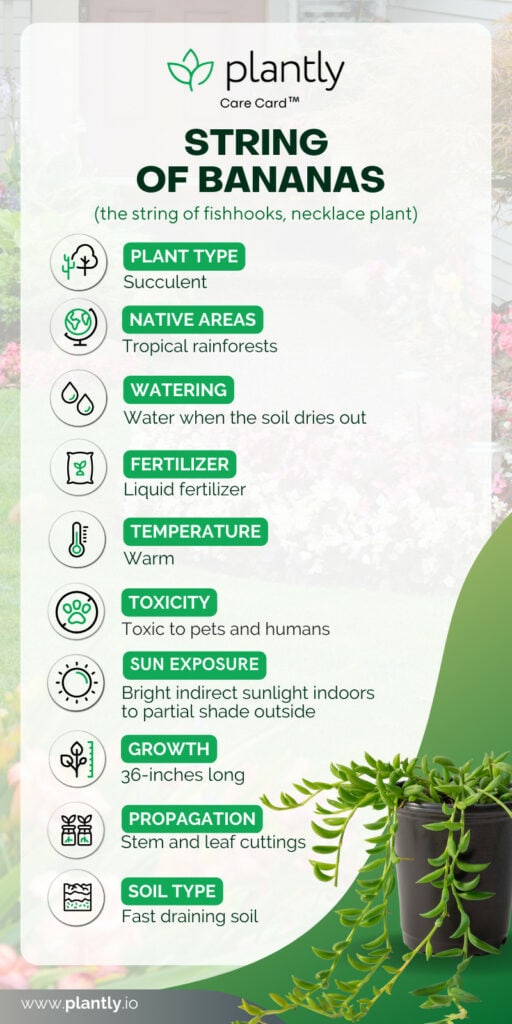
Great, now that you know the shorts and sweetness of taking care of these hanging plants, let’s dig a bit deeper.
Best Potting Mix for Banana String Succulent
One thing you need to keep your string of bananas alive is adequate drainage to prevent root rot which is a common problem with trailing succulents.
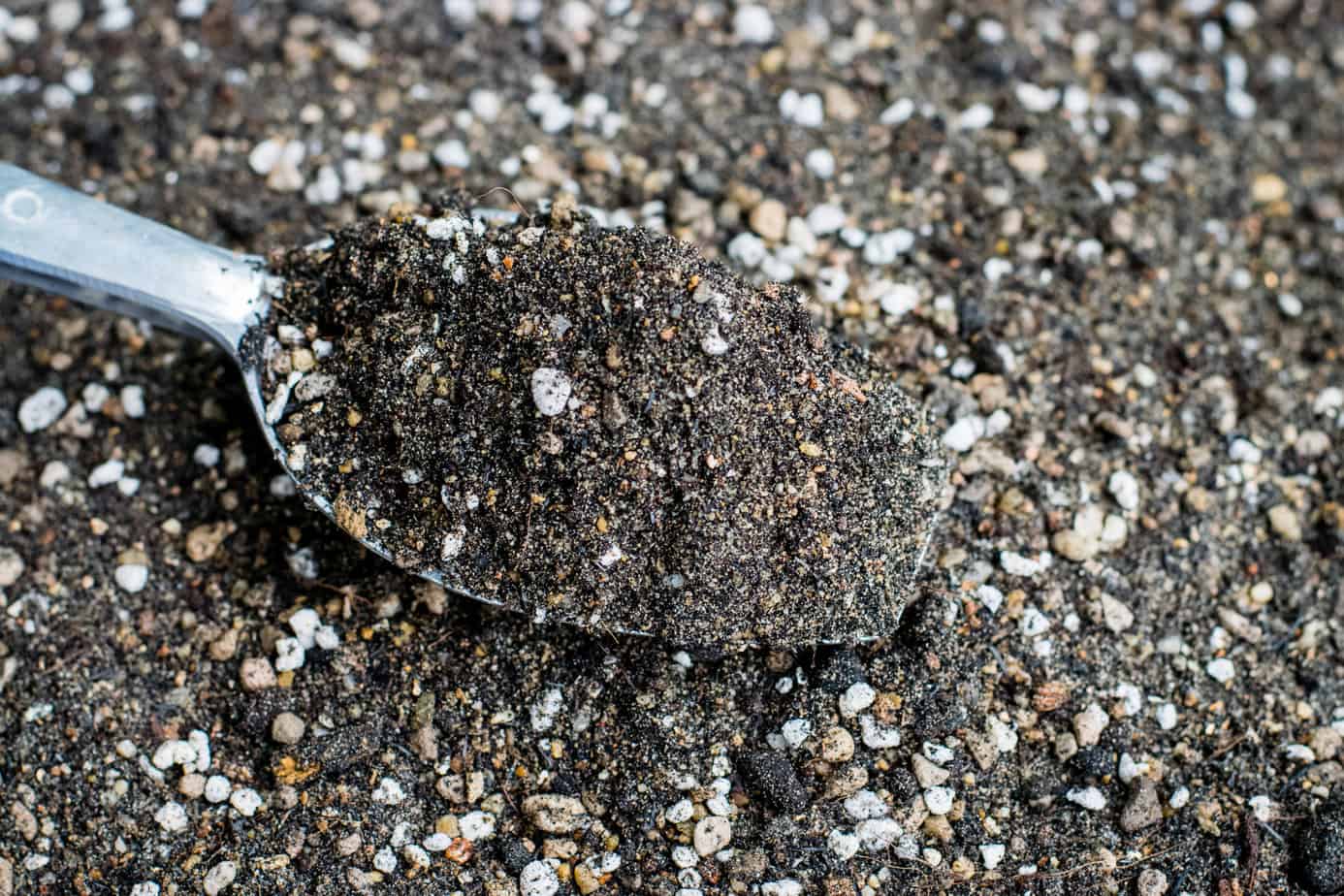
Sandy soil with a neutral pH level is best for these plants, or you can invest in a cactus mix. The potting medium needs to be light, and cacti soil is the best ground to use.
Lighting Needs
As crucial as a well-draining potting mix is for your string of bananas, it needs proper lighting to prevent the stems from getting leggy.
When grown as a ground cover, grow a string of bananas in partial shade for optimal results. Grown as houseplants in hanging baskets, it needs bright direct light for at least six hours throughout the day.
Watering
Your string of bananas Senecio has unique requirements when it comes to watering. As a succulent already with well-draining soil, they only need minimal water.
The best is to water your string of bananas when the soil feels dry. Compared to other hanging succulents, this one is drought-tolerant.
We recommend the soak and dry technique as keeping it only moist helps your plant establish itself. In addition, you will water your plant at least once a week in the spring and summer months.
In fall and winter, you will find your water schedule reduces, and you can leave these plants without water for a few days.
Recommended Temperature & Humidity
Your string of bananas does not enjoy living in the cold and is a bit frost-tender. Yet, the plant loves warm weather and can cope with temperatures as high as 110℉ (43℃.)

The plant can also tolerate temperatures as low as 30℉ to 40℉ (-1℃ to 4℃). Still, it can only handle these temperatures for a little while.
Grown as an outdoor plant, it is not fussy but does grow better in milder climates grown indoors, it thrives.
So, if your greenery is standing outside and the temperatures drop, it is best to bring them inside. Yet, as with temperature, your vegetation is not too phased by humidity.
Still, keeping the foliage in high humidity needs less water. Compared to most succulents, when you grow a string of bananas, it needs no humidity tray. Is that not great news? Could you give us a yeah?
Fertilizer
Curio radicans growing outdoors or indoors need no feeding but can grow faster with a bit of fertilizing.

It is one of the few succulents that can go without a feed. Still, if you want to fertilize it, do it once a year using a cacti liquid feed. Overfeeding your plant can lead to leggy growth.
Propagation
The best way to propagate your string of bananas is to use cuttings from the leaves or stems. It is an easy process no matter which one you choose, but stem cutting stays a popular technique.
But first, you need to choose a strand you want to cut. We recommend cutting from the mature stems as they already have roots growing along the stem.
Further, choose one that has leaves that is not mushy, dehydrated, or shriveled and take multiple stems to propagate, providing you with two plants.
Once you remove the stem cuttings, you leave them to dry out. This enables the stem to heal faster and prevents bacteria or fungus from entering the wound.
You can use a rooting hormone as an optional but not a necessity. All it does is speed up the rooting process. Please feel free to use any of these propagate string methods:
Stem Cuttings in Soil
- Cut a two inches section from the bottom of the host plant.
- You can remove a few of the beads, making placing the stem in the soil easier.
- Prepare a fast-draining potting medium like perlite mixed with a cactus mix and coarse sand added.
- Place the cut end into the dirt to help it root faster, and it should take two weeks at the most. Next, place your string of bananas away from direct sunlight and mist the soil every few days. You can stop misting once the roots establish and start watering.
- Leave the stem cuttings for two more weeks to wait for new growth to develop at the top of your vegetation.
Growing String Layed on Soil
- Place the cutting flat on the prepared soil to allow the limb to touch the earth. You will notice it starts to shoot out roots when touching the ground.
- Still, when taking cuttings with roots, place them so that the roots can dig into the soil by using something to hold it in place like a paper clip cut in half.
- Keep misting every few days when you feel the ground is dry, and once rooted, you can switch over to watering. The new growth should happen in two weeks and keep them away from full sunlight.
Propagation Using Water
- Take the tip of the cutting and place it in filtered water.
- In about two to three weeks, you notice new roots growing.
- When you see a lot of roots, you can transplant your vines in a prepared potting mix.
- As with the previous propagation methods, keep misting your plant when it feels dry once transplanted.
Keep your houseplant away from direct sunlight at first to prevent sunburn, and start to water your plant by decreasing it once established.
Growth Zone for String of Bananas

When it comes to gardening, and you want to grow your string of bananas outdoors, you can do this in the USDA hardiness zones 10 through 12.
Potting
One thing you will find growing the string of bananas is that it is a versatile succulent to grow in the garden or indoors.
Another impressive thing as a container plant does not mind becoming root-bound and only needs transplanting every few years.
The reason for doing this is to refresh the potting medium by increasing the pot size. The only time you prune your plant is when you notice dead stems.
String Of Bananas Varieties
We already mentioned the string of pearls, but there are other varieties similar to the string of bananas seen here:
String of Pearls – Curio rowleyanus
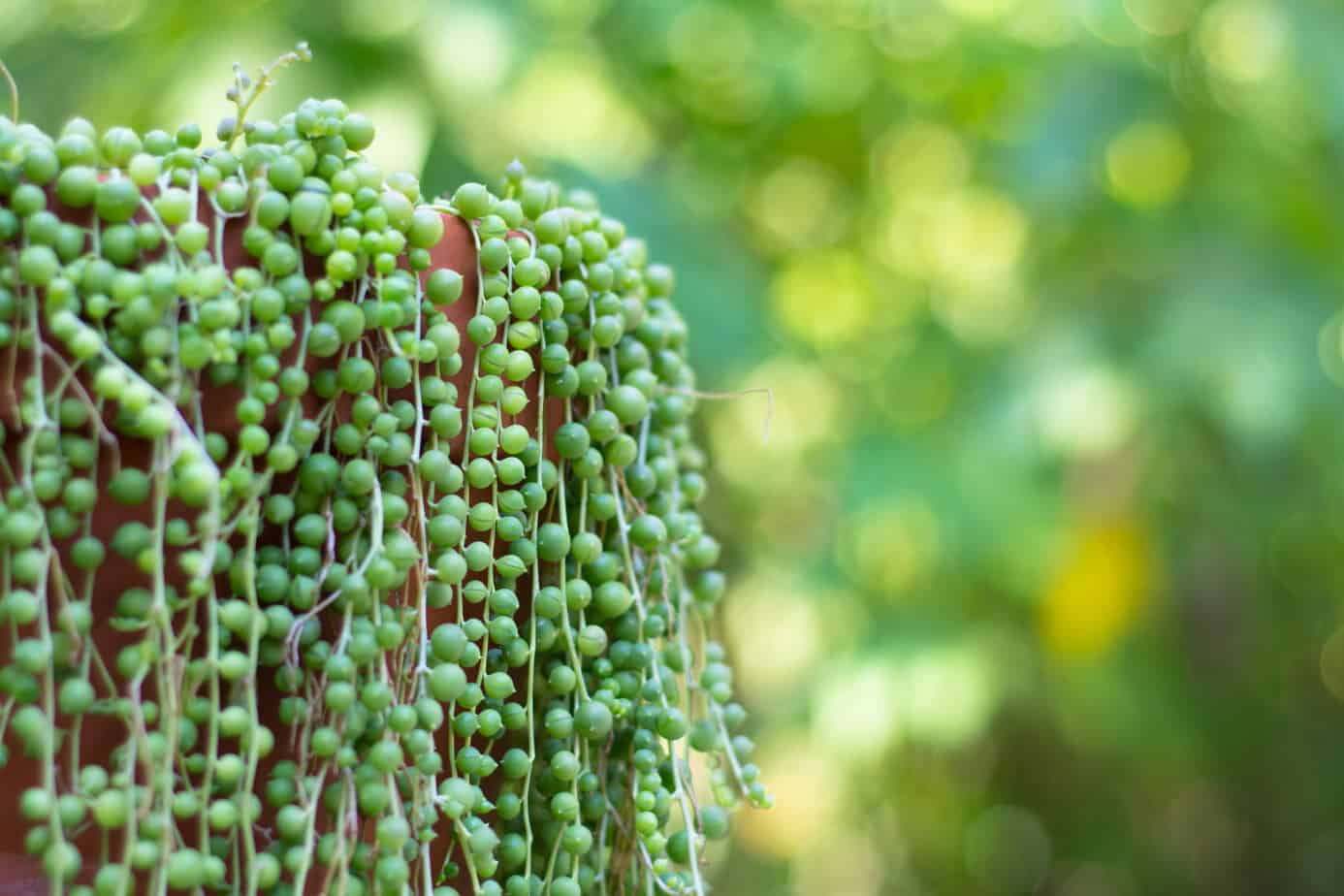
Another name for this widespread vegetation is the string of beads, but it is a finicky succulent. Keeping it indoors with enough light is more effortless than growing it in the garden.
String of Hearts – Ceropegia linearis subp. woodii

The succulent goes by many names, from the rosary vine, and string of rosary, to the string of chains. It is another African greenery that is easy to grow. The stems trail long, but it has a rapid growth rate.
String of Needles
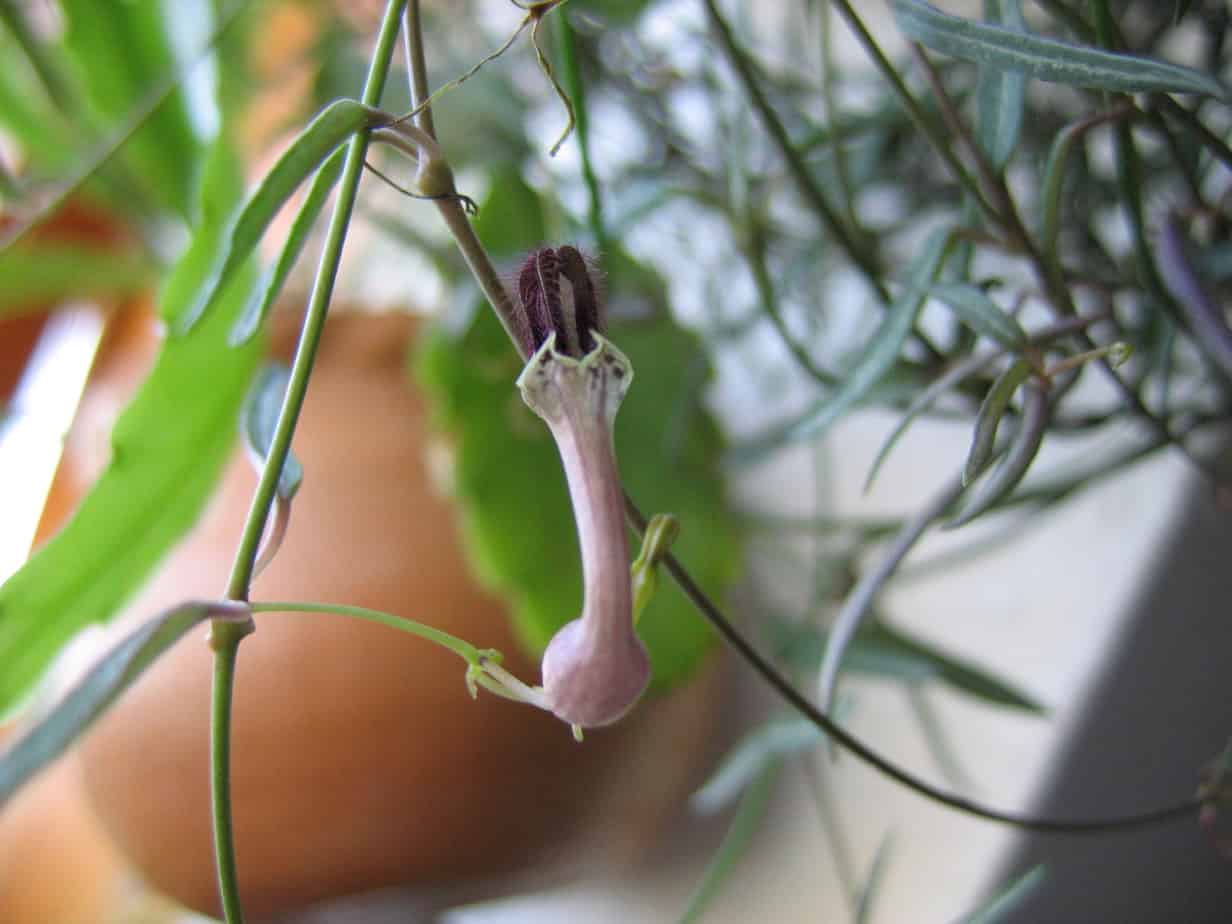
The foliage is thinner and longer resembling needles and is a rare plant to find.
String of Buttons – Crassula perforata
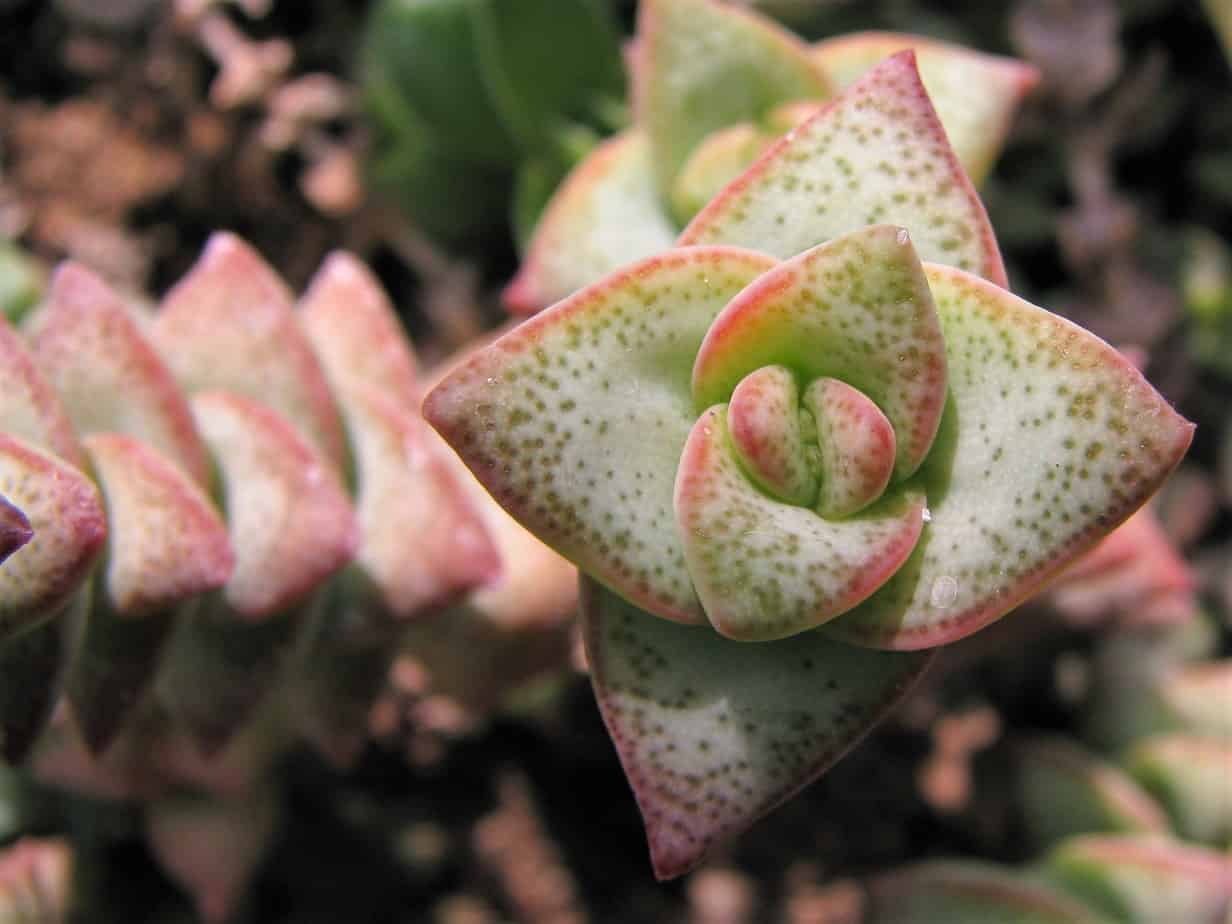
The creeping succulent also comes from Africa and has a triangular-shaped reddish-edged leaf.
String of Dolphins – Curio x pereginus

Another rare plant you cannot always find that is similar to your string of bananas is the string of dolphins. Yes, you guessed right, the leaves resemble dolphins.
Only 1 left in stock In stock In stock In stock
$10.00
Sold By:
Smoot's Farm
Echeveria Topsy Turvy Runyonii Succulent 4″ Pot Live Plant
Rated 4.89 out of 5 based on 27 customer ratings00
Sold By:
Smoot's Farm
Free Shipping
$24.95 – $29.95
Sold By:
A&K Plants
Lively Philodendron Neon | Easy-care Epiphytic Vine | Vibrant Foliage | 4-inch pot
Only 4 available and it’s in 1 people’s basket Rated 4.95 out of 5 based on 66 customer ratings00
Sold By:
A&K Plants
$30.00
Sold By:
Southern Oak Exotics
Chlorospatha Species Ex Ecuador
Sold By:
Southern Oak Exotics
$6.99
Sold By:
BubbleBlooms
Green Ripple Peperomia Frost
Only 97 available and it’s in 1 people’s basket Rated 4.81 out of 5 based on 279 customer ratings00
Sold By:
BubbleBlooms
Diseases & Pests
The succulent usually is free from diseases and pests, but it does not mean your other houseplants cannot affect them. So we recommend keeping an eye on mealybugs, aphids, and scale.
While the cases of these insects are minor, they do become nuisances and need to be dealt with promptly. The biggest problem you can face with your greenery is root rot resulting from overwatering.
The problem is root rot can go unnoticed, and you only see it when it is too late. Unfortunately, there is no cure for it, and the best is to prevent overwatering.
Frequently Asked Questions
The string of pearls grows small balls on the leaves and flowers around spring and summer. You find them in green colors mostly, but variegated versions are available with the pearls white in color.
When you expose it to direct sun, it develops a purple tinge The string of bananas has long grown vines with plump leaves forming a silhouette of bananas.
Some people say it looks like beans. This is because it has green stems, or you can find them in red.
According to the ASPCA, the string of bananas is not listed as toxic, but its cousin, the string of pearls, is harmful to pets and humans. As the two are closely related, we can expect this succulent to cause an upset stomach or vomiting if ingested.
Overwatering is the leading cause of your string of bananas dying from the bottom. The best is to wait for the soil to dry before you water your foliage. When your greenery gets root rot, you cannot save it, and best to take multiple stem cuttings to propagate in fresh soil.
The hanging succulent is fast growing with low maintenance for beginner plant parents. These are drought-tolerant plants to care for.
The only time you mist the bananas string plants is when you root cuttings in a well-draining potting mix. Please place it in indirect light and mist the soil to keep it moist. Once roots establish, stop misting your plant and start watering it.
While drought tolerant, it can suffer when bone dry for too long. Neither do they enjoy wet feet, and best to wait until the soil is dry between watering to prevent root rot.
Whether you want to buy, sell, or simply reach out to other plant enthusiasts, Plantly is the right place to be!
-
Free Shipping$34.99Sold By: Aloha Hawaii Orchids
In stock
Dendrobium Sea Breeze Comes in 3″ Pot
Rated 4.65 out of 5 based on 268 customer ratings00Sold By: Aloha Hawaii Orchids -
$14.95Sold By: Wonka Plants
In stock
Alocasia “Black Velvet”
Rated 4.94 out of 5 based on 108 customer ratings00Sold By: Wonka Plants -
$25.30Sold By: Carlo's Plant Farm
In stock
Parsoni Juniper | Carlo`s Plant Farm
Rated 5.00 out of 5 based on 22 customer ratings00Sold By: Carlo's Plant Farm -
$56.99Sold By: Succulent Oasis
In stock
Large Succulent Arrangement in a Tan Oval Designed Tin.
Only 6 available and it’s in 1 people’s basketRated 4.84 out of 5 based on 352 customer ratings00Sold By: Succulent Oasis



